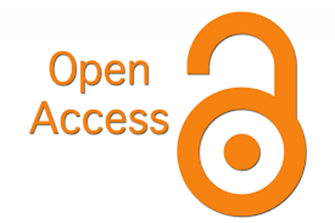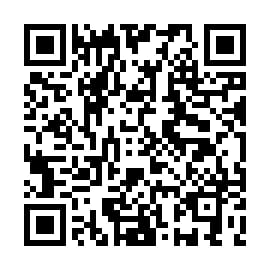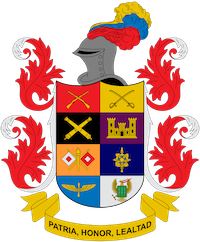Water Strategy and Geopolitics in Latin America: A Strategic Intelligence Perspective
Abstract
Latin American countries are positioned as a relevant actor in the international system as they concentrate 31% of the world's freshwater sources, presenting a series of conflicts between different actors who fight for the control and management of this resource in order to achieve their interests, whether social or economic. This article analyzes some of the regional and domestic tensions generated by the availability and management of water in Latin America, from which the reasons why water resources, understood in terms of available drinking water and water reserves (aquifers), represent a strategic resource in the geopolitics of Latin American States are presented. It is concluded that Latin America and the Caribbean is positioned as a strategic region at the geopolitical level in the international system, due to its drinking water resources. It is positioned as an area of interest for foreign actors who intend to supply their water needs in the near future, and as an area of conflict between private actors, communities and States.
Downloads
References
Anthias, P. (2018). Indigenous Peoples and the New Extraction: From Territorial Rights to Hydrocarbon Citizenship in the Bolivian Chaco. Latin American Perspectives, 45(5), 136–153. https://doi.org/10.1177/0094582X16678804
Ardila, C. et al. (2020). Aportes teóricos a la construcción del concepto de inteligencia estratégica. Libros Escuela Superior de Guerra. Recuperado a partir de https://esdeguelibros.edu.co/index.php/editorial/catalog/book/68
Atlas de Justicia Ambiental. (n.d.-a). Complejo de Hidroeléctricas en el Río Usumacinta, México y Guatemala. Atlas de Justicia Ambiental. Retrieved October 7, 2022, from https://ejatlas.org/conflict/lucha-binacional-contra-la-cadena-de-proyectos-hidroelectricos-en-el-rio-usumacinta-mexico-y-guatemala?translate=es
Atlas de Justicia Ambiental. (n.d.-b). Conflicto por la denominación de las Aguas del Silala, Potosí, Bolivia. Atlas de Justicia Ambiental. Retrieved October 7, 2022, from https://ejatlas.org/conflict/aguas-del-silala-potosi-bolivia
Banco de Desarrollo de América Latina (CAF). (31 de julio de 2017). La paradoja de la escasez de agua en América Latina. https://www.caf.com/es/conocimiento/visiones/2017/07/la-paradoja-de-la-escasez-de-agua-en-america-latina/
Banco Mundial. (2018). Recursos de agua dulce internos renovables per cápita (metros cúbicos). https://datos.bancomundial.org/indicador/ER.H2O.INTR.PC
Banco Mundial. (s.f.). El agua en la agricultura. Banco Mundial. Retrieved November 7, 2022, from https://www.bancomundial.org/es/topic/water-in-agriculture
Cárdenas, E. (2020). Cuantificación de flujos sedimentarios de las cuencas amazónicas de Perú. Repositorio Institucional – UNALM. http://repositorio.lamolina.edu.pe/bitstream/handle/UNALM/1713/RH32-69-TM.pdf?sequence=1&isAllowed=y
Castro, G. (2014, May 14). LA CUENCA DEL USUMACINTA, CUNA DE LA RESISTENCIA MESOAMERICANA ORGANIZADA CONTRA LAS REPRESAS – Otros Mundos Chiapas. EL ESCARAMUJO 47. https://otrosmundoschiapas.org/el-escaramujo-47-la-cuenca-del-usumacinta-cuna-de-la-resistencia-mesoamericana-organizada-contra-las-represas
Center for Disease Control and Prevention. (2016, October 11). Industrial water: Uses in Manufacturing and Industry. Center for Disease Control and Prevention (CDC). https://www.cdc.gov/healthywater/other/industrial/index.html
Constitución Política de Colombia [C.P.]. (1991). Artículo 80 [Capítulo 3]. (2.a ed.). Legis.
Correa, L. (2020). Aguas dulces entre Chile y Bolivia: el Silala en su laberinto. Relaciones Internacionales, (45), 163–183. https://doi.org/10.15366/relacionesinternacionales2020.45.007
Espinoza, C. (2014). Apuntes de un conflicto: CENEPA 1995. Centro de Estudios Históricos del Ejército (CEHE), 32. https://cehist.mil.ec/images/2021/32.pdf
Freedman, L. 2013. Strategy. A History. New York: Oxford University Press.
Grupo Intergubernamental de expertos sobre el Cambio Climático (IPCC). (2021). Climate Change 2021: The Physical Science Basis. United Nations https://www.ipcc.ch/report/ar6/wg1/
Guillén, G. (2017). El río que se robaron: El exterminio de la nación Wayuú. https://www.youtube.com/watch?v=79SvUfKC0jc
Gustavo Petro. (2022). Programa de Gobierno Gustavo Petro. Programa de Gobierno Gustavo Petro. https://drive.google.com/file/d/1nEH9SKih-B4DO2rhjTZAKiBZit3FChmF/view
Jablonsky, David. 2012. Why is Strategy Difficult?, en U.S. Army War College Guide to National Security Issues. Volume I: Theory of War and Strategy. Washington DC: Strategic Studies Institute.
Jacubovich, D. (2017). Geopolítica del agua en América Latina: la guerra por el oro azul amenaza el planeta. http://nuevageopolitica.blogspot.com/2008/08/nadie-habla-del-oro-azul-relfexin.html
Johnson, L. K. (2007). Strategic intelligence. Westport. Praeger security international.
Kettelhut, J. T. S. (2013). Lessons learned from The Guarani Aquifer System Project Adopted In The La Plata Basin Framework Program. Environmental Development, 7(1), 109–118. https://doi.org/10.1016/j.envdev.2013.04.002
Kruse, T. (2005). La “Guerra del Agua” en Cochabamba, Bolivia: Terrenos complejos, convergencias nuevas. In E. de la Garza (Ed.), Sindicatos y nuevos movimientos sociales en América Latina. Colección Grupos de Trabajo de CLACSO. http://biblioteca.clacso.edu.ar/clacso/gt/20101109025721/5kruse.pdf
Lacoste, Yves, (2006). Geopolítica: la larga historia de hoy. Larousse, París. Francia.
Leguizamón Álvarez, A. M., & Veloza Mantilla, W. V. (2021). Las comunidades indígenas en el constructo de nación: una revisión teórica. Perspectivas en Inteligencia, 12(21), 203 - 217. https://doi.org/10.47961/2145194X.232
Manzan, K. (2016). Representaciones geopolíticas: Chile y Argentina en Campos de Hielo Sur. Estudios fronterizos, 17(33), 83-114. Recuperado el 9 de octubre de 2022, de http://www.scielo.org.mx/scielo.php?script=sci_arttext&pid=S0187-69612016000100004&lng=es&tlng=es. https://doi.org/10.21670/ref.2016.33.a04
Manzano, K. (2015). Campos de Hielo Sur: El agua y su rol geopolítico. Revista de Relaciones Internacionales, Estrategia y Seguridad, 10(2), pp. 131-151. https://doi.org/10.18359/ries.582
McDowell, D. (2009). Strategic intelligence: A handbook for practitioners, managers, and users. Lanham, Md: Scarecrow Press.
Ministerio de Ambiente. (2015). Colombia y Estados Unidos firman memorando de entendimiento para la protección de la Amazonía. MinAmbiente. https://archivo.minambiente.gov.co/index.php/noticias-minambiente/1851-colombia-y-estados-unidos-firman-memorando-de-entendimiento-para-la-proteccion-de-la-amazonia.
Nieto, N. (2011). La gestión del agua: tensiones globales y latinoamericanas. Política y Cultura (36), pp. 157-176. http://www.scielo.org.mx/scielo.php?script=sci_arttext&pid=S0188-77422011000200007
Organización de los Estados Americanos (OEA). (2004). El recurso invisible - Acuíferos transfronterizos: una oportunidad de cooperación internacional. Series sobre elementos de políticas. https://www.oas.org/dsd/policy_series/3_spa.pdf
Organización de los Estados Americanos (OEA, 2006). Protección Ambiental y Desarrollo Sostenible del Sistema Acuífero Guaraní. Departamento de Desarrollo Sostenible. http://www.oas.org/DSD/WaterResources/Pastprojects/Guarani_esp.asp
Organización de Naciones Unidas (ONU, 2020). Informe Mundial de las Naciones Unidas sobre el Desarrollo de los Recursos Hídricos 2020: Agua y Cambio Climático. UNESCO. https://es.unesco.org/themes/water-security/wwap/wwdr/2020
Peña, R; López, J; Sastre, F y Martínez, A. (2022). Water Conflicts in Sub-Saharan Africa. Frontiers in Environmental Science. https://doi.org/10.3389/fenvs.2022.863903
Pertegal-Felices, M. L., Espín-León, A., & Jimeno-Morenilla, A. (2020). Diseño de un instrumento para medir identidad cultural indígena: caso de estudio sobre la nacionalidad amazónica Waorani. Revista de Estudios Sociales, 75(71), 51 - 67. https://doi.org/10.7440/res71.2020.05
Portillo, A. (2008). La geopolítica del agua en el Medio Oriente. Revista Geográfica Venezolana, 49 (1), p. 115 - 122
PID Amazonía. (25 de agosto de 2020). El agua de la Amazonía: una riqueza en riesgo. Plataforma de investigación y diálogo para la Amazonía colombiana. https://www.pidamazonia.com/content/el-agua-en-la-amazonia-una-riqueza-en-riesgo
Raffestin, C. (2011). Por una geografía del poder. Michoacán: Colegio de Michoacán.
Ramírez, M y Yepes (2011). Geopolítica de los Recursos Estratégicos: conflictos por el agua en América Latina. Revista de Relaciones Internacionales, Estrategia y Seguridad. http://www.scielo.org.co/scielo.php?script=sci_arttext&pid=S1909-30632011000100008 https://doi.org/10.18359/ries.2158
Ramos, J y Rodríguez, J. (2018). Evolución de los intereses y la presencia de Estados Unidos en la triple frontera. Estudios Internacionales, Santiago, 50 (191). http://dx.doi.org/10.5354/0719-3769.52010semp https://doi.org/10.5354/0719-3769.2018.52010
Rosales, G. (2005). Geopolítica y Geoestrategia, Liderazgo y Poder. Publicaciones y Comunicaciones UMNG
Sánchez, J. (2012). En la Mente de los Estrategas. Escuela Superior de Guerra.
Trapagá, Y. (2013). América Latina y El Caribe - China Recursos Naturales y Medio Ambiente. Red ALC - China. https://www.redalcchina.org/redalcchina_2013_rnaturales.pdf
UNESCO. (2008). Marco legal e institucional en la gestión de los sistemas acuíferos transfronterizos en las Américas. Dept. of Sustainable Development OAS. https://unesdoc.unesco.org/ark:/48223/pf0000158963
Universidad Autónoma Nacional de México. (2016, february 9). Presa sobre el río Usumacinta: Proyecto hidroeléctrico o catástrofe ambiental. Universidad Autónoma Nacional de México. http://www.agua.unam.mx/noticias/2016/nacionales/not_nac_febrero09_5.html
World Wildlife Fund. (s.f.). Water and Security. World Wildlife Fund (WWF). Retrieved November 7, 2022, from https://www.worldwildlife.org/initiatives/water-and-security.

This work is licensed under a Creative Commons Attribution-NonCommercial-NoDerivatives 4.0 International License.













